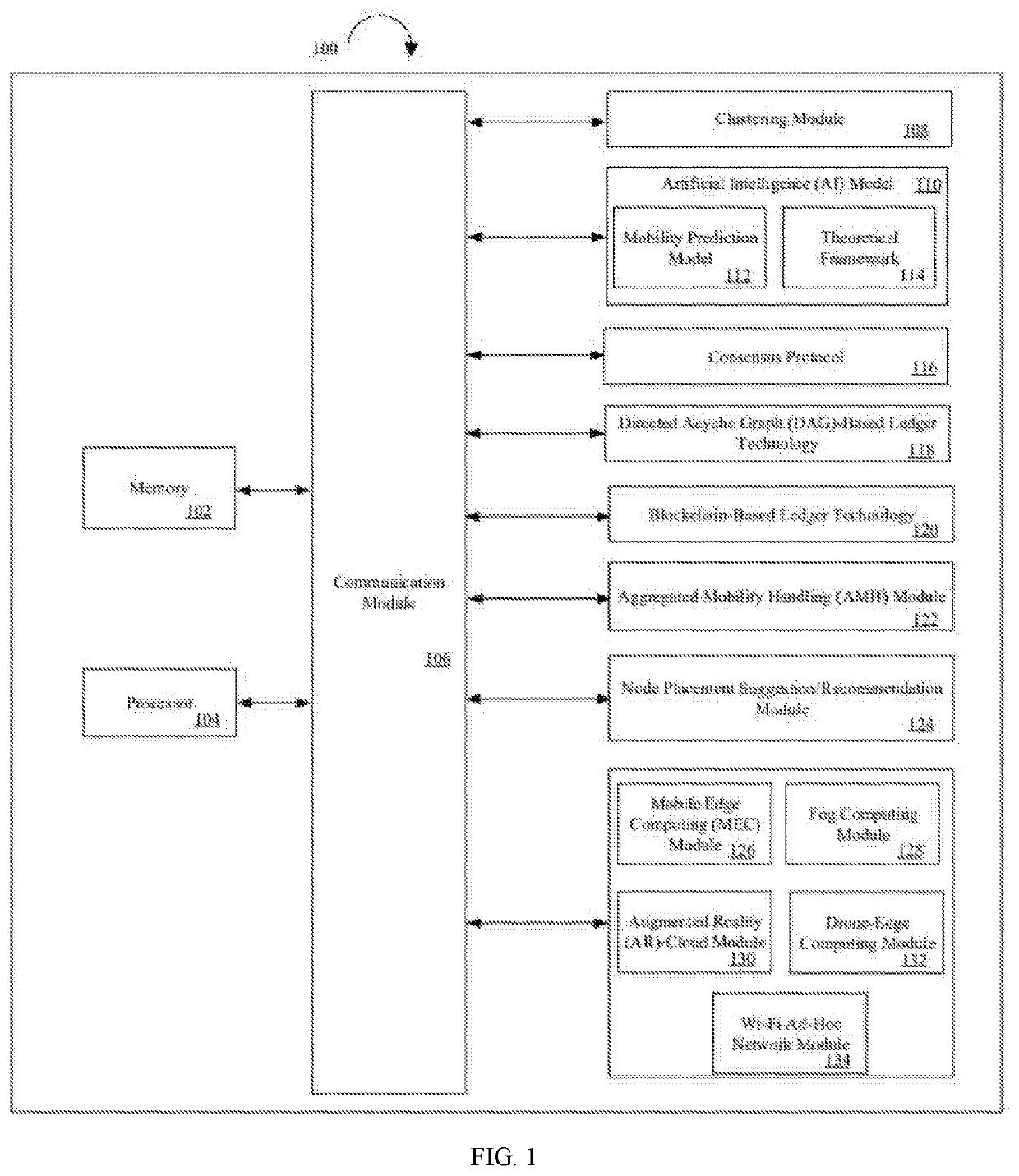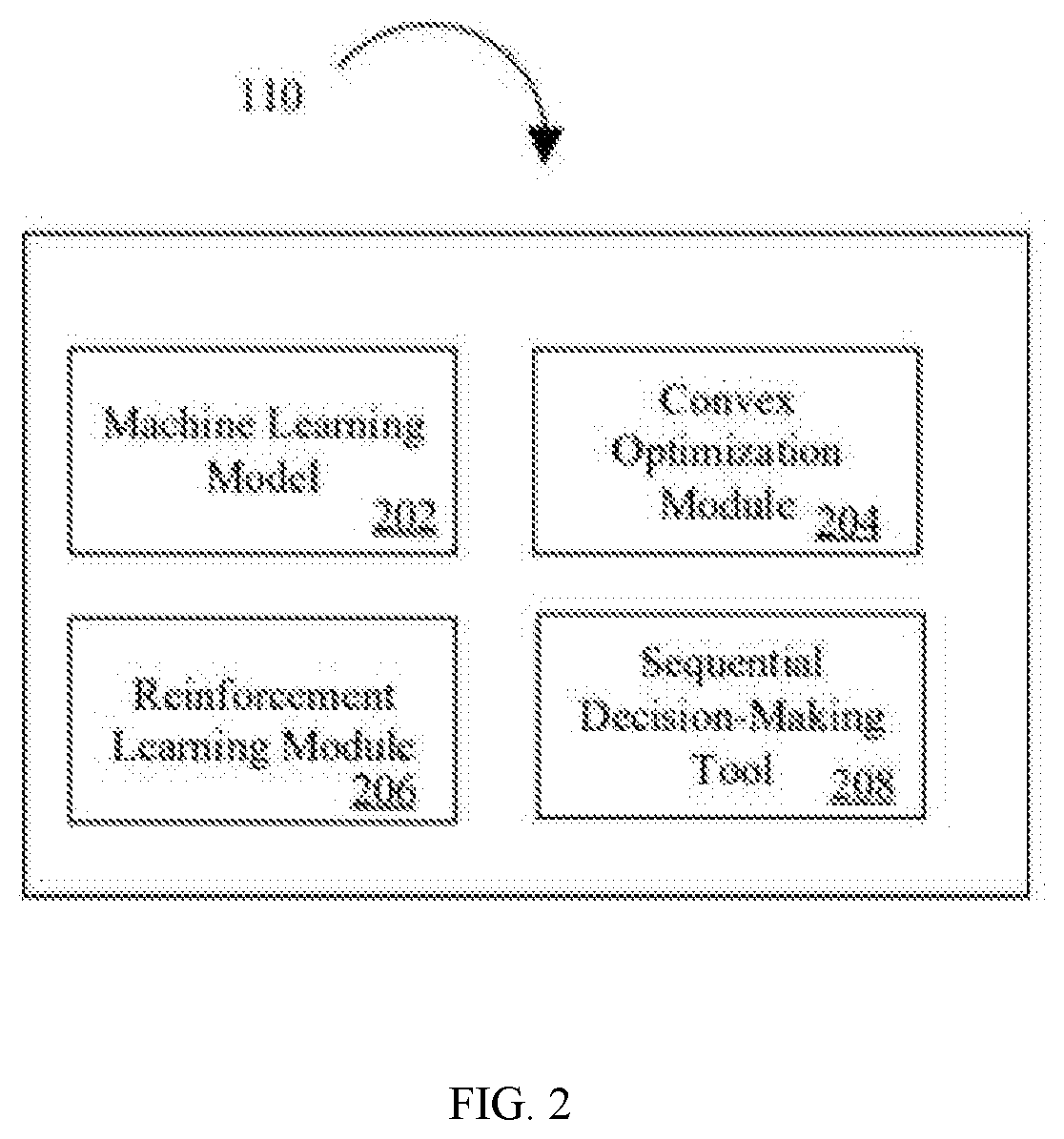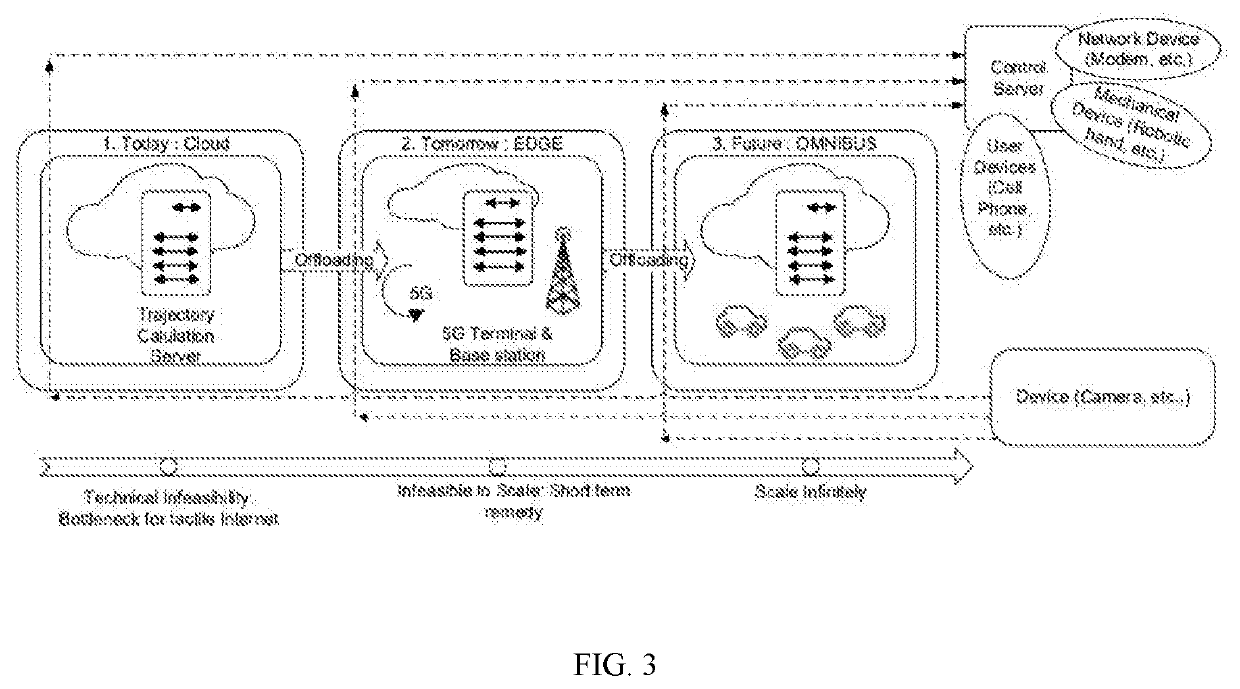Method and system for distribution of computational and storage capacity using a plurality of moving nodes in different localities: a new decentralized edge architecture
a distributed computing and storage technology, applied in the direction of computing models, instruments, program control, etc., can solve the problems of centralized cloud system, inability to meet future network demands, and inability to provide a comprehensive platform to da
- Summary
- Abstract
- Description
- Claims
- Application Information
AI Technical Summary
Benefits of technology
Problems solved by technology
Method used
Image
Examples
Embodiment Construction
[0024]Before describing in detail embodiments that are in accordance with the invention, it should be observed that the embodiments reside primarily in combinations of method steps and system components for distribution of computational capacity for a plurality of end-devices in different localities using a decentralized edge architecture with an Artificial Intelligence (AI) model to enable fast and efficient distribution of computational and storage resources using a plurality of moving nodes which may include, but need not be limited to, moving vehicles, pedestrians carrying wireless and / or cellular communication devices (such as, but not limited to, Wi-Fi, LTE, 5G, 6G) and drones.
[0025]Accordingly, the system components and method steps have been represented where appropriate by conventional symbols in the drawings, showing only those specific details that are pertinent to understanding the embodiments of the invention so as not to obscure the disclosure with details that will be...
PUM
 Login to View More
Login to View More Abstract
Description
Claims
Application Information
 Login to View More
Login to View More - R&D
- Intellectual Property
- Life Sciences
- Materials
- Tech Scout
- Unparalleled Data Quality
- Higher Quality Content
- 60% Fewer Hallucinations
Browse by: Latest US Patents, China's latest patents, Technical Efficacy Thesaurus, Application Domain, Technology Topic, Popular Technical Reports.
© 2025 PatSnap. All rights reserved.Legal|Privacy policy|Modern Slavery Act Transparency Statement|Sitemap|About US| Contact US: help@patsnap.com



